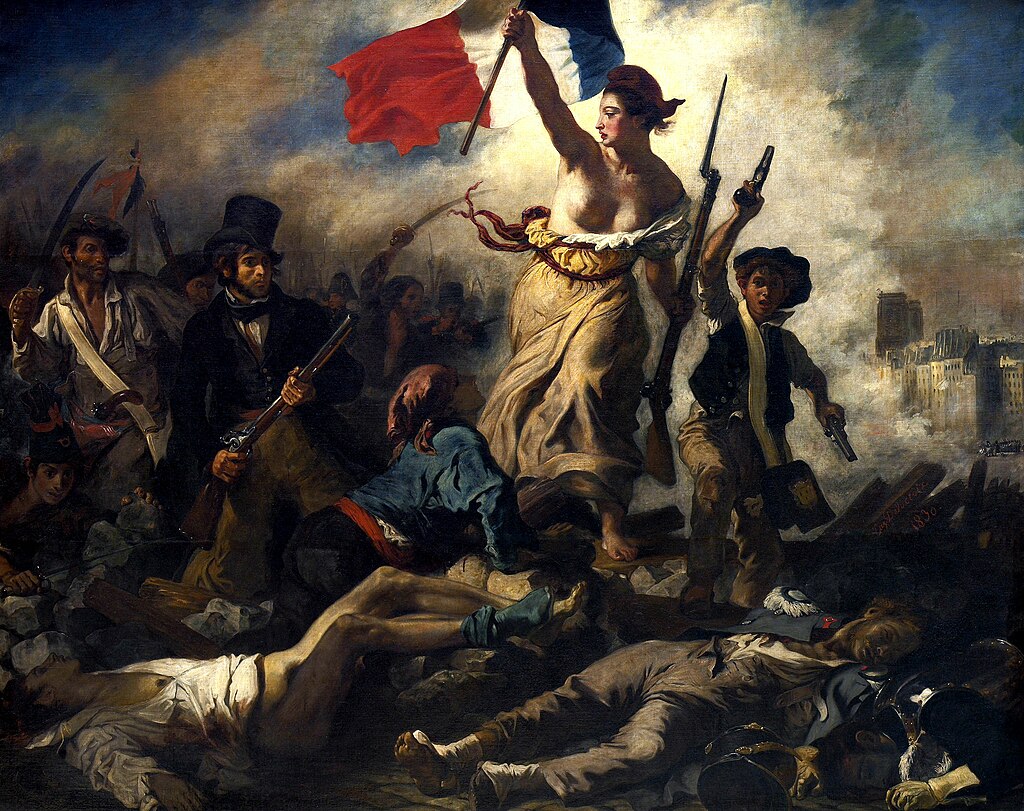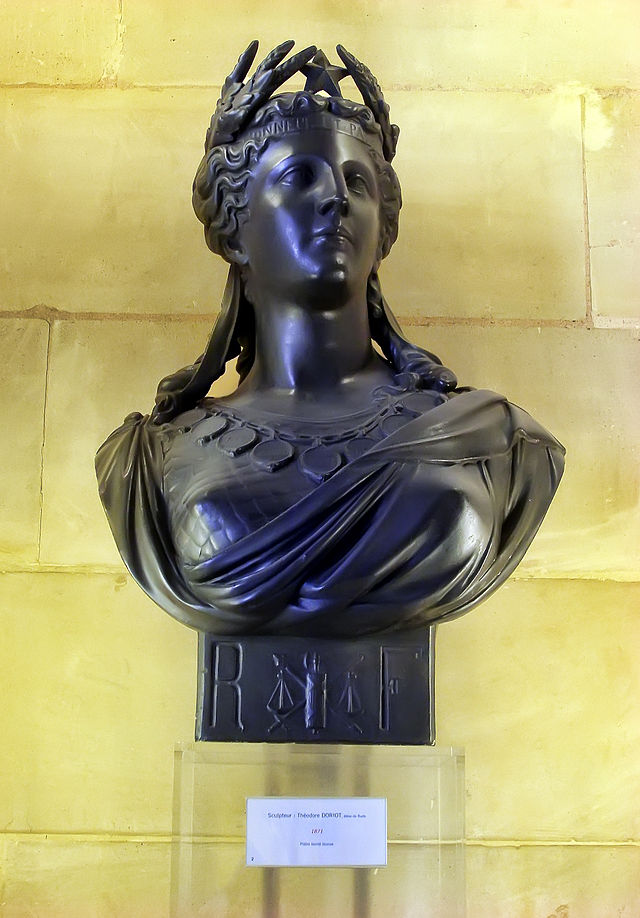Eugène Delacroix
(French Romantic, 1798–1863)
A military attack -- on the inhabitants of Chios Island by Ottoman forces in 1822 -- resulted in the deaths of 20,000 citizens, and the forced deportation into slavery of almost all the surviving 70,000 inhabitants. Dark smoke came from a burning village in the background.
Believed to be a preparatory work in oil for the artist's later Massacre at Chios, Orphan Girl at the Cemetery is nevertheless considered a masterpiece in its own right.
 |
| Self-portrait with Green Vest - Eugène Delacroix in 1837 - oil on canvas (65 x 54.5 cm) - Louvre Museum (Paris) |
 |
|
- Eugene Delacroix
- oil on canvas (419 × 354 cm) 1824
- Louvre (Paris)
|
 |
| Chios island was close to the Ottoman Empire, and inhabited by Greeks. |
.JPG/800px-Eug%C3%A8ne_Delacroix_-_Jeune_orpheline_au_cimeti%C3%A8re_(vers_1824).JPG) |
|
- Delacroix
- oil on canvas (65 × 54 cm) 1824
- Louvre (Paris)
|
.jpg) |
| The Death of Sardanapalus - Eugène Delacroix - oil on canvas (392 × 496 cm) 1827 - Louvre (Paris) & (74 × 82 cm) 1844 - Philadelphia Museum of Art |
 |
| Entry of the Crusaders in Constantinople - Eugène Delacroix - oil painting (498 × 410 cm) 1840 - Louvre (Paris) |
 |
| Apollo Slays Python - Eugene Delacroix - oil on mounted canvas (800 x 750 cm) 1850-1851 - Louvre Museum (Paris) |
 |
- Eugene Delacroix - oil on canvas (260 × 325 cm) 1830 - Louvre (Paris) |
Note the use of the tricolor among the clothes, and the loss of shoes and trousers (to other poor).
 |
Bust of Marianne - Théodore Doriot French Senate |
This figure of Liberty, known as Marianne, is viewed as a symbol of France and the French Republic, an allegory of liberty and reason, and a portrayal of the Goddess of Liberty.
One other view of the July Revolution:
 |
| Prise de l'Hôtel de ville : le Pont d'Arcole - Amédée Bourgeois (1798-1837, French) - oil on canvas (145 x 195 cm) 1831 - Palace of Versailles (Paris) |
- Delacroix
- oil canvas (36 x 26 cm) 1825-26
- Thyssen-Bornemisza Museum (Madrid)
 |
| The Barque of Dante - Delacroix - oil on canvas (189 × 246 cm) 1822 - Louvre (Paris) |
 |
| Arab Saddling his Horse - Delacroix - oil on canvas (56 x 47 cm) 1855 - Hermitage Museum (Saint Petersburg) |
 |
| Sultan of Morocco - Delacroix - oil on canvas (377 x 340 cm) 1845 - Musée des Augustins de Toulouse (France) |
Moulay Abd-er-Rahman, Sultan of Morocco, leaving his palace in Meknes, surrounded by his guard and his main officers.
 |
| Women of Algiers in their Apartment - Delacroix - oil on canvas (180 × 229cm) 1834 - Louvre (Paris) |
From 1857 to 1861 Delacroix worked on frescoes for the Chapelle des Anges at the Church of Saint-Sulpice in Paris:
They included "Saint Michael Slaying the Dragon", and the following two, all stories from the Old Testimony:
(L) Jacob Wrestling with the Angel
- Delacroix
- fresco (714 x 485 cm) 1856-1861
- Church of Saint-Sulpice (Paris)
(R) Heliodorus Driven from the Temple
- Delacroix
- fresco (751 x 485 cm) 1854-1861
- Church of Saint-Sulpice (Paris)
The Portrait of Chopin & Sand
The Portrait of Frédéric Chopin and George Sand was an 1838 unfinished oil-on-canvas painting by Delacroix.
(L) Frédéric Chopin
- Delacroix
- Delacroix
- oil on canvas (46 x 38 cm) 1838
- Louvre (Paris)
- Louvre (Paris)
(R) George Sand
- Delacroix
- oil on canvas (79 x 57 cm) 1838
- Ordrupgaard (Copenhagen)
- Delacroix
- oil on canvas (79 x 57 cm) 1838
- Ordrupgaard (Copenhagen)
Source: Wikipedia
 |
| A 19th century cartoon depicting Ingres with a pen versus Delacroix with a brush |



.jpg)


No comments:
Post a Comment